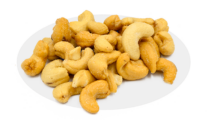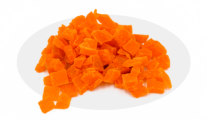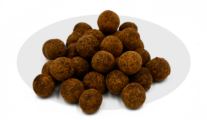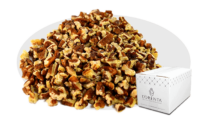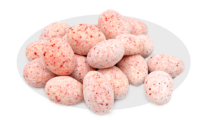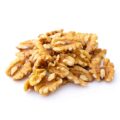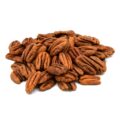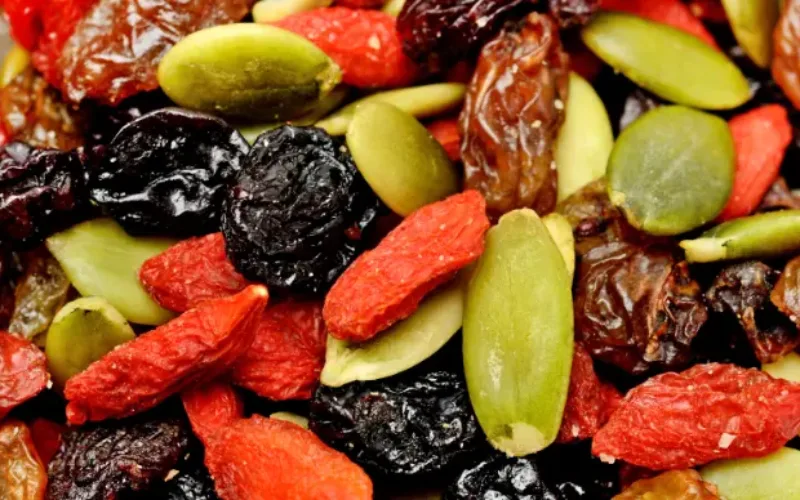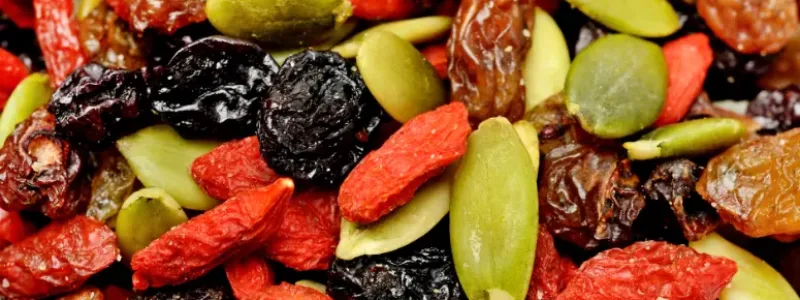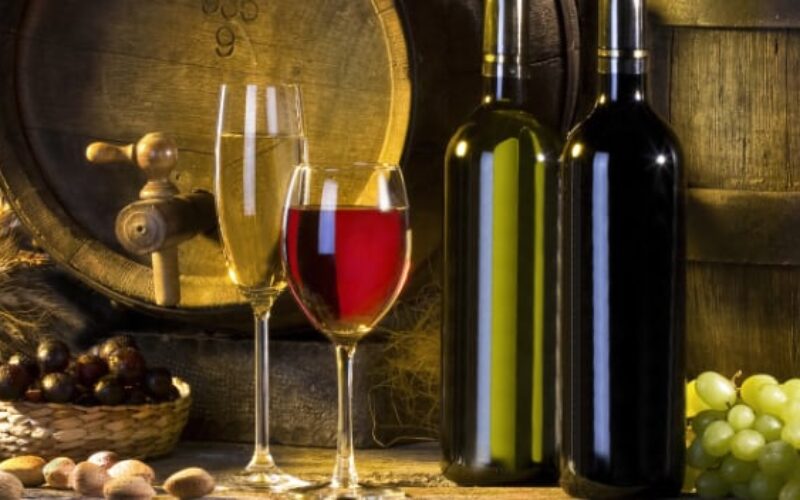Written By Sam Henselijn
Pairing Nuts with Wines is an art that has been refined over centuries, creating harmonious unions on the palate that elevate the dining experience. But while cheese, chocolates, and various types of meat have traditionally taken center stage in this culinary ballet, there’s a humble yet versatile companion to wine that often gets overlooked: nuts. They’re not just for snack bowls and trail mixes; nuts possess a surprising complexity that can accentuate and complement the flavors of wine in ways that many may not expect.
Just as wine is more than merely fermented grape juice, nuts are far more than simple snacks. Nuts come with their own rich tapestry of flavors, textures, and aromas. They can be creamy, crunchy, sweet, or savory; some have an inherent sweetness that begs for a contrasting partner, while others possess a subtle bitterness that can be smoothed over with the right wine. When expertly paired, nuts can unlock new layers within a wine, adding dimension to each sip, and wine can elevate the taste of the nuts, making for a match that is both unexpected and delightful.
In this in-depth article and guide, we’ll delve into the nuances of pairing nuts with wines. Starting with an understanding of the basic flavor profiles of both nuts and wines. This article will discuss how the creamy richness of an almond can highlight the crisp acidity of a Chardonnay or how the earthy undertones of a walnut can be mirrored in the tannic depth of a Cabernet Sauvignon.
We’ll take a closer look at pairings for white wines, where the citrus notes and floral aromas can dance with the likes of pistachios and cashews. Transitioning to reds, we’ll discuss how their bold and robust nature can harmonize with the hearty, often buttery flavors of nuts such as pecans and hazelnuts. And not to leave out the sparkling and rosé enthusiasts, we’ll explore options that are light, effervescent, and full of summer flavors, perfect for a more delicate nut pairing.
Why does a particular nut enhance the attributes of certain wines?
Understanding Flavor Profiles
Nuts, with their range of flavors and textures, are a dynamic player in the pairing game, just as wines, with their varied expressions and complexities, are. To effectively pair these two, one must delve into the subtleties that define their essence. Let’s start with common types of nuts and their distinctive taste profiles.
Almonds are known for their slightly sweet and buttery taste, with a hint of vanilla-like aroma when roasted. The texture of an almond can range from soft to a satisfying crunch, making it a versatile partner for wine.
Cashews stand apart with their creamy texture and delicate sweetness. When roasted, they develop a richer, toasty profile with a subtle underlying earthiness. This inherent sweetness and buttery character play well with wines that offer a contrasting acidity or fruitiness.
Walnuts have an earthy, robust taste with a tannic edge, especially when fresh. They can impart a slight astringency, which can be mellowed out when paired with sweeter wines. Their boldness in flavor and the presence of natural oils make them an excellent counterpoint to wines with body and depth.
Hazelnuts are another nut variety that boasts a pronounced nuttiness, with a pronounced richness and a warm, toasted quality. Their flavor can be reminiscent of roasted coffee beans and even exhibit hints of chocolate when paired with the right wine.
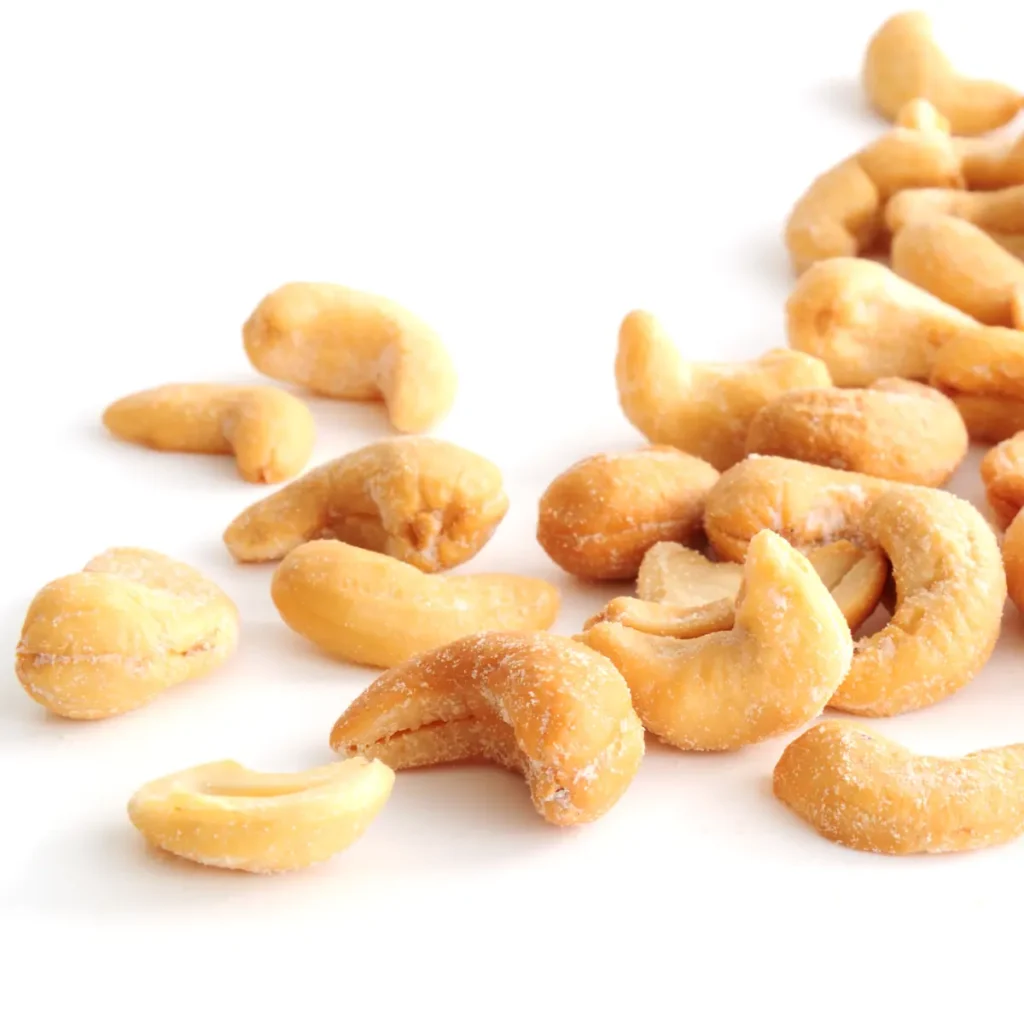
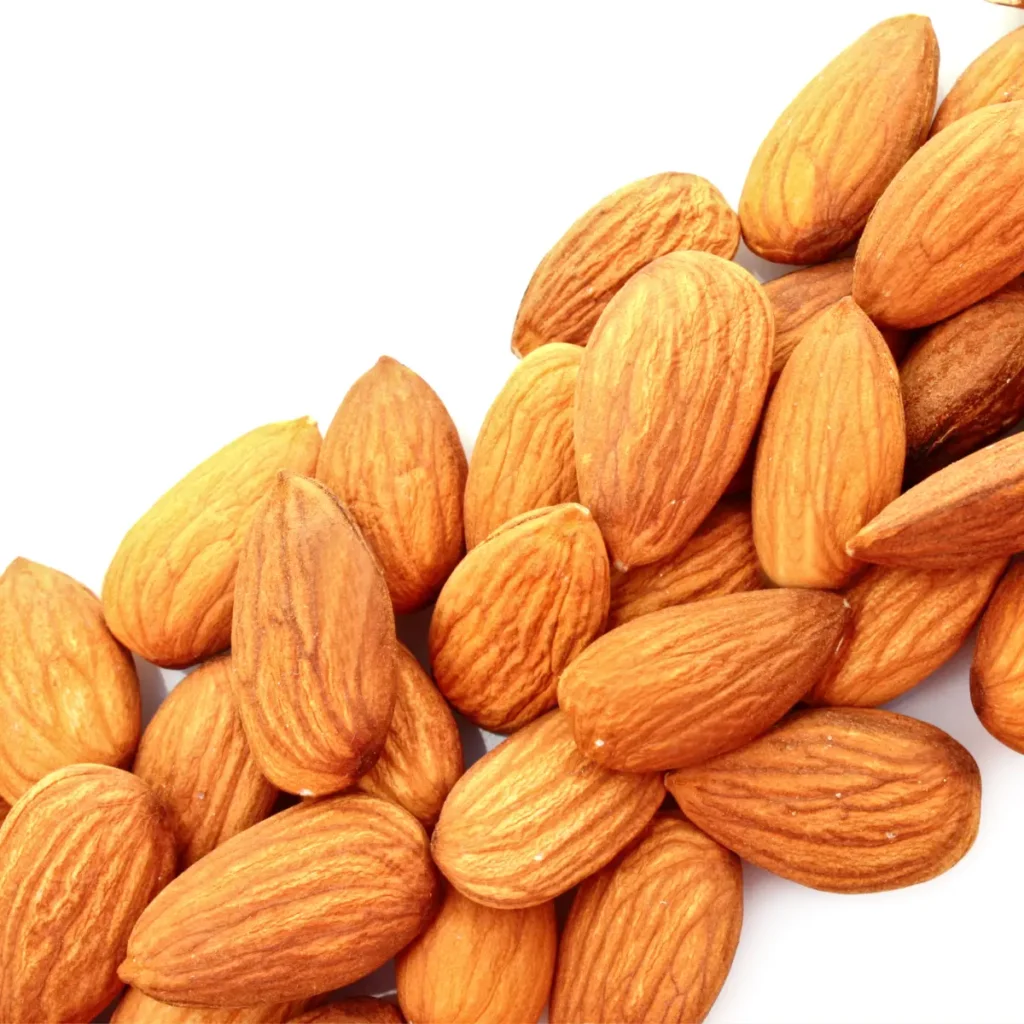
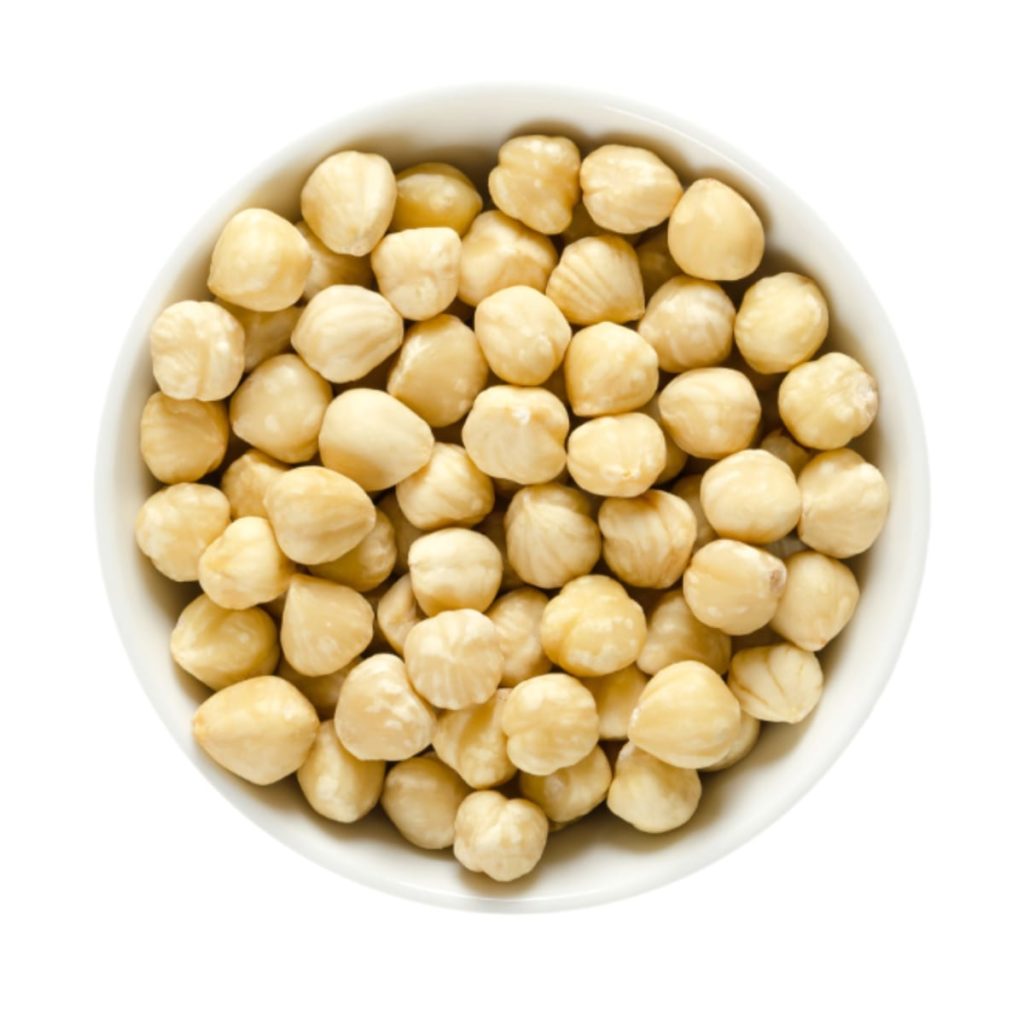
Understanding Types of Wine
Now turning to wines, reds generally carry notes of red and dark fruits like cherries, raspberries, and blackberries, often deepened by hints of tobacco, earth, or spices from oak aging. Their tannins can lend a dry finish that cleanses the palate, particularly when enjoying fatty foods or, in this case, oily nuts.
White Wines
White wines can range from crisp and mineral with notes of green apple and citrus, to rich and buttery with tropical fruit flavors and hints of vanilla, depending on the grape and aging process. They can have a zesty acidity which makes them excellent for cutting through the richness of nuts.
Rose Wines
Rosé wines typically offer a balance between the red and white spectrum, with flavors ranging from strawberry and citrus to melon and rhubarb, often with a crisp, dry finish. They can act as a palate cleanser or complement the nutty flavors with their fruitiness.
Sparkling Wines
Sparkling wines bring yet another dimension with their effervescence. Bubbles can accentuate the nutty flavors and cleanse the palate simultaneously. These wines can range from dry and austere to sweet and fruity, providing a broad spectrum of pairing possibilities with various nuts.

The interaction between nuts and wines is a dance of flavors and textures. The creamy richness of an almond, for instance, can highlight the crisp acidity of a Sauvignon Blanc or temper the oak-infused vanilla notes of an oaked Chardonnay. In this pairing, the wine’s vivacity balances the almond’s creaminess, while the nut’s subtle sweetness echoes the fruity characteristics of the wine.
A sparkling wine, with its carbonation and bright acidity, can act as a counterpoint to the rich, creamy texture of cashews. The effervescence of a Prosecco or Champagne offers a refreshing contrast to the soft bite of the cashew, and the subtle fruit notes of the wine can harmonize with the nut’s sweetness.
The robust nature of walnuts, with their earthy and slightly astringent profile, finds a companion in the full-bodied richness of a Cabernet Sauvignon or a fortified sweet wine like Port. The wine’s tannins and depth of flavor can stand up to the strong character of the walnut, creating a union where each enhances the other.
Hazelnuts, with their deep and round nuttiness, naturally complement the buttery, oaky notes of a well-aged Chardonnay or the delicate, fruity nuances of a young Pinot Noir. The toasted quality of the hazelnut resonates with the toasty undertones of the wine, bridging the gap between the two.
Through these interactions, it becomes evident that the profile of the nut should either complement or contrast with that of the wine. Complementary pairings, such as a buttery nut with a creamy wine, can amplify shared characteristics, creating a luxurious and coherent taste experience. Contrast pairings, on the other hand, like a bitter nut with a sweet wine, can balance and enhance disparate elements, making each taste more pronounced and enjoyable.
As we transition from understanding the inherent flavors of nuts and wines, we can apply this knowledge to the pairings with white wines, where the citrus notes and floral aromas can enhance the characteristics of nuts such as pistachios and cashews, providing a spectrum of delightful experiences for the palate.
Pairing Nuts with White Wines
In the world of wine and nut pairings, white wines offer a myriad of opportunities for delightful combinations with different types of nuts. Each variety of white wine, with its unique flavor profile, can find its match in the diverse characteristics of nuts. To discover which nuts complement these wines best, let’s explore some specific pairings.
Chardonnay
A widely beloved white wine, Chardonnay can be produced in two main styles: unoaked and oaked. Unoaked Chardonnays tend to be lighter with crisp fruit flavors reminiscent of apple, pear, and citrus. On the other hand, oaked Chardonnays carry richer notes of vanilla, butter, and a smooth, creamy finish.
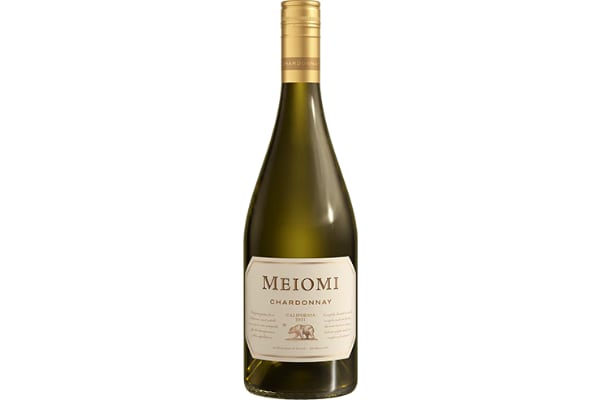
For an unoaked Chardonnay, almonds are an excellent choice. The nut’s inherent sweetness and subtle bitterness are just right to complement the wine’s fruitiness and vibrant acidity. When hosting a summer garden party, a bowl of almonds alongside a chilled unoaked Chardonnay can elevate the experience, as the nut’s mild character does not overpower the wine’s delicate notes.
With an oaked Chardonnay, the choice of hazelnuts is a sophisticated match. The toasted, buttery flavors of the nuts mirror the creamy, oaky notes of the wine. Consider serving this pairing at an elegant dinner gathering, where the wine and hazelnuts can be an opulent prelude to a sumptuous meal.
Sauvignon Blanc
Sauvignon Blanc is well-known for its zesty, herbaceous qualities, with flavors ranging from green apple and lime to bell pepper and freshly cut grass. This wine’s high acidity makes it a refreshing choice, particularly suitable for warmer weather.
Pairing Sauvignon Blanc with pistachios brings out the best in both. The pistachio’s subtle sweetness and slightly resinous edge are a perfect match for the tart and tangy character of the wine. This pairing is ideal for a casual afternoon picnic where the bright and fresh flavors can be savored alongside light fare.
Riesling
Riesling wines vary greatly in sweetness levels, from bone-dry to lusciously sweet. Generally, Rieslings exhibit flavors of lemon, nectarine, and honey, and often possess a striking mineral quality. Their vibrant acidity is the backbone that balances the sweetness, making them versatile for pairing.
For a dry Riesling, cashews are a prime choice. The cashew’s buttery texture and gentle sweetness offset the crisp acidity of the wine, creating a satisfying mouthfeel. A dry Riesling and cashews pairing can be particularly enjoyable at an art gallery opening, where the understated elegance of the nuts matches the sophistication of the occasion.
On the other end of the spectrum, a sweet Riesling pairs delightfully with walnuts. The walnut’s slight bitterness and earthy profile help cut through the wine’s sweetness, making for a balanced taste experience. This pairing can be a hit at dessert during a holiday feast, where the sweet Riesling can serve as a stand-in for dessert wine, and the walnuts add a rich, textural contrast.
Pinot Grigio
Pinot Grigio is known for its light-bodied, refreshing quality with flavors of lime, green apple, and honeysuckle. Its straightforward, clean taste makes it an excellent palate cleanser and a favorite choice for a variety of occasions.
When paired with macadamia nuts, Pinot Grigio shines. The creamy richness of the macadamias complements the wine’s crispness, while the subtle nutty flavors do not compete with the wine’s simplicity. Serve this combination at a beach party or a relaxed gathering, where the lightness of both the wine and nuts won’t overpower the laid-back atmosphere.
Viognier
The often-underrated Viognier is a full-bodied white wine with aromas of stone fruit, such as peach and apricot, along with floral notes. Its low acidity but pronounced flavors give it a distinct profile, different from other white wines.
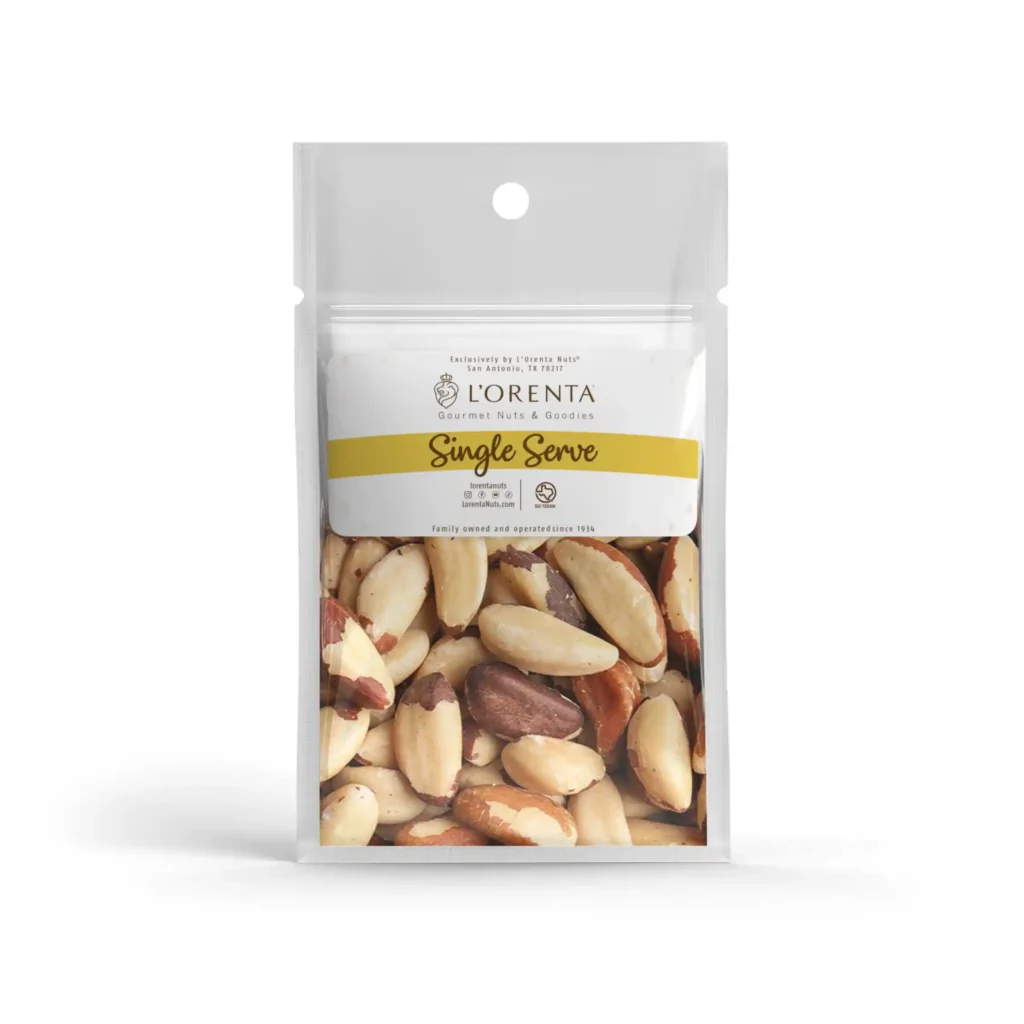
Brazil nuts, with their bold, meaty texture and rich flavor, stand up well to the full-bodied nature of Viognier. This pairing works well in an intimate setting, perhaps a small dinner party where the wine and nuts can be appreciated as a conversation starter.
Gewürztraminer
Gewürztraminer is notable for its aromatic, spicy bouquet with flavors of lychee, rose petal, and sometimes a hint of ginger or allspice. It’s a wine that can range from dry to sweet and carries a slightly oily texture that can linger on the palate.
To accompany Gewürztraminer, pecans are a superb fit. The nut’s natural sweetness and buttery texture harmonize with the wine’s aromatic intensity. Consider this pairing for an autumnal event, where the spiced notes of the wine and the comforting crunch of pecans can evoke the season’s cozy warmth.
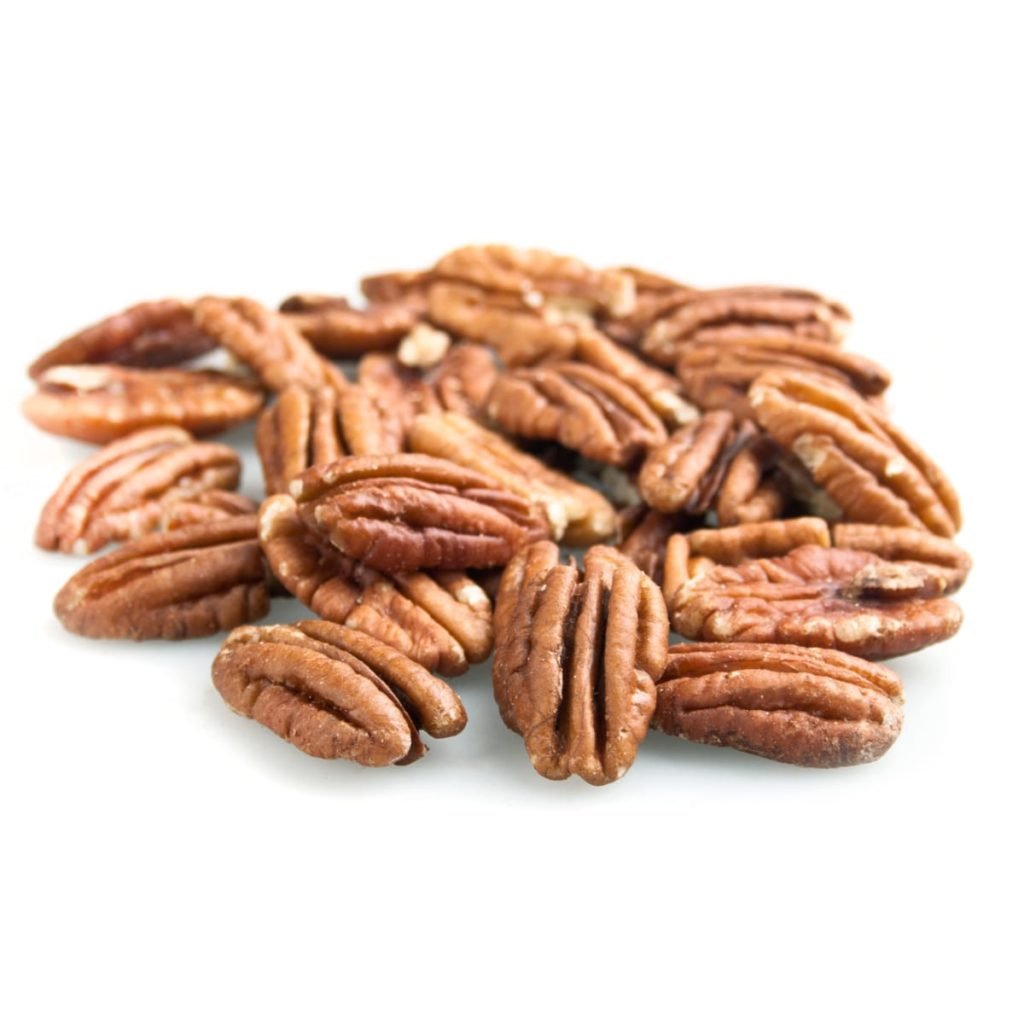
Each of these pairings showcases how a careful selection of nuts can complement and enhance the characteristics of white wines. From crisp and acidic to rich and aromatic, the right nut can make a white wine truly sing. Whether for a large celebration or a quiet night in, these pairings are bound to create memorable moments and tantalize the taste buds of all who partake.
With these detailed examples in mind, we shift our focus to the robust and expressive world of red wines. Here, nuts with richer, oilier textures often find their counterparts in the tannin-heavy and complex profiles of reds.
Pairing Nuts with Red Wines
Moving from the crisp and aromatic whites into the robust and enchanting world of red wines, we find a new array of nut pairings that embrace the rich and often complex flavors of these deeper-hued elixirs. Red wines, with their tannic structure and full-bodied character, invite nuts that can stand up to and even enhance the wine’s boldness and depth.
Cabernet Sauvignon
Cabernet Sauvignon, the king of red wines, is known for its high tannin content, dark fruit flavors, and hints of spice and oak. It is a wine that demands a nut with sufficient presence to complement its intensity. Walnuts are an exemplary choice for pairing with Cabernet Sauvignon. The slightly astringent and bitter taste of walnuts balances the robust tannins of the wine, while their rich, earthy flavor melds seamlessly with Cabernet’s dark fruit notes. This duo is particularly well-suited to a sophisticated evening soirée where bold flavors are celebrated.
For a variation on this pairing, try toasting the walnuts to enhance their nutty essence. This will add another dimension to the experience, aligning with the oaky nuances of a well-aged Cabernet. Think of a cozy winter dinner party, where a glass of Cabernet and a handful of toasted walnuts set the tone for a night of warm conversation.
Merlot
Merlot, with its plush and velvety texture, tends to have softer tannins and a fruit-forward profile that includes black cherry and berries, often with a chocolatey undertone. Brazil nuts, with their creamy texture and mild flavor, are a superb match for Merlot. The subtlety of Brazil nuts doesn’t compete with the wine’s fruity nature but instead provides a smooth counterpart that enhances Merlot’s inherent richness. This pairing is quite versatile, suited for both an elegant dinner or as a comforting end to a casual meal among friends.
Another pairing option for Merlot is pecans. These nuts, particularly when candied, can draw out the sweet, ripe berry flavors of the wine. The caramelization of the pecans echoes the toasty sweetness that comes from the wine’s time in oak barrels. It’s an indulgent combination that would fit right in at a decadent brunch or a festive gathering.
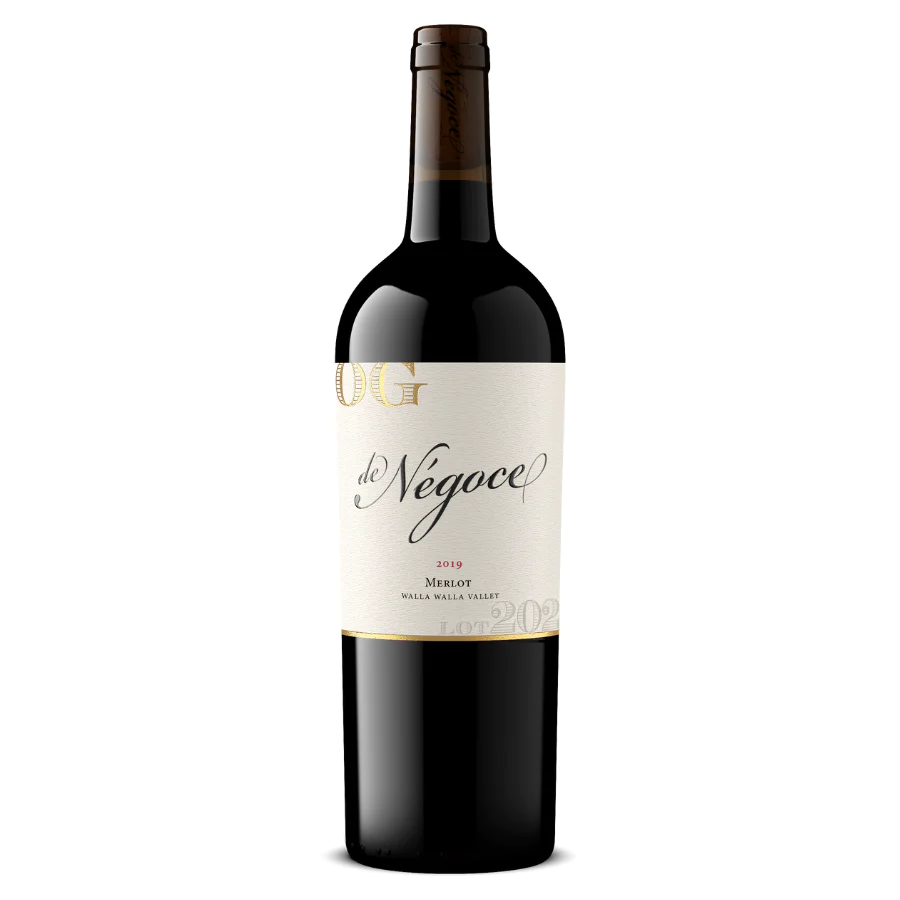
Pinot Noir
Pinot Noir is the delicate darling of the red wine world, offering a spectrum of red fruit flavors from strawberries to cherries, complemented by earthy undertones and a silky mouthfeel. The lightness of Pinot Noir makes it an excellent candidate for pairing with almonds. Almonds, with their subtle flavor and just the right amount of crunch, do not overshadow the nuanced profile of Pinot Noir. They can even heighten the wine’s gentle fruitiness. Picture a springtime picnic where a bottle of Pinot Noir and a bag of almonds encourage leisurely sipping and snacking under the soft sun.
For a more decadent experience, consider pairing Pinot Noir with truffle-infused almonds. The umami-rich truffle amplifies the earthy components of the wine, creating a luxurious combination worthy of a special occasion, such as an anniversary dinner or a gourmet gift.
Syrah/Shiraz
Syrah, or Shiraz, as it’s known in Australia, brings forth a powerful punch of black fruit, pepper, and smoky flavors. To match the intensity of Syrah, one needs a nut like the macadamia. Macadamias, with their buttery richness and creamy texture, stand up to the boldness of Syrah. They help soften the impact of the wine’s tannins and complement its rich, spicy palate. This duo is a natural fit for a backyard barbecue or an exotic cuisine night, where the strong flavors can be simultaneously highlighted and tamed.
Zinfandel
Zinfandel is celebrated for its jammy fruits and spicy, sometimes smoky, attributes. It’s a wine that can handle a nut with a lot of personalities, like the spiced pecan. Spiced pecans, whether they are dusted with sweet cinnamon or fiery chili, enhance the peppery notes in Zinfandel and make for a memorable taste sensation. This pairing could shine at a festive holiday party or as a unique addition to a game night, providing a playful yet sophisticated snack option.
Malbec
Malbec, particularly from Argentina, is renowned for its deep, inky color, and flavors that range from juicy plum to blackberry with a hint of chocolate and violet. Hazelnuts, with their robust flavor and satisfying crunch, can stand shoulder to shoulder with Malbec. They enhance the chocolate undertones of the wine and offer a counterbalance to its bold fruitiness. This pairing is just right for an intimate gathering where the rich flavors of both the wine and the nuts can be savored in good company.
Whether you’re serving a cheese platter with nuts and dried fruits, or simply putting out bowls of nuts with a curated selection of red wines, these pairings have the potential to elevate the experience significantly. It is in these moments, with good food, fine wine, and great company, that the true magic of wine and nut pairings comes to life. The next segment will delve into the often-overlooked, yet equally delightful pairings of nuts with rosé and sparkling wines. Here, we’ll explore how the lightness and effervescence of these wines can be beautifully complemented by a well-chosen nut.
Pairing Nuts with Rosé and Sparkling Wines
Venturing into the vibrant and often underappreciated territory of rosé and sparkling wines, we open up to a festive world of pairings that marry the crisp, effervescent qualities of these wines with the earthy, buttery, and sometimes sweet nuances of nuts. Both rosé and sparkling wines boast a variety of styles, from the dry and minerally to the sweet and fruity, creating a vast landscape for potential nut companions.
Rosé Wine
Rosé wine, with its blushing color and chameleon-like nature, is as diverse as it is popular. Whether it’s a dry, Provencal-style rosé or a sweeter White Zinfandel, the right nut can take the experience from simply refreshing to utterly transcendent.
With a classic, dry rosé, almonds are an idyllic partner. The subtle sweetness and slight oiliness of raw almonds complement the floral and melon notes of the wine, while their delicate crunch adds a textural contrast to the silky liquid. Marcona almonds, a rounder and softer variety often roasted in olive oil and sprinkled with a touch of salt, pair beautifully with these wines. They accentuate the bright acidity and highlight the dry, crisp finish of the rosé. Envision a midsummer’s afternoon, lounging on a sunlit patio with friends, sipping chilled rosé, and nibbling on almonds as the perfect antidote to the heat.
For those who favor a fruitier, slightly sweeter rosé, pistachios are an excellent match. The nut’s inherent sweetness and gentle savoriness dance well with the fruit-forward profile of the wine, especially when the pistachios are roasted and salted. This pairing is well suited for a brunch scene or a beach picnic, where the playful nature of sweet rosé and the cheerful green of pistachios add a splash of joy to the gathering.
Sparkling Wines
Sparkling wines are a category that encompasses a wide range of bubbly options, from the yeasty complexity of Champagne to the light-hearted sweetness of Asti Spumante. Each type calls for a nut pairing that can either contrast or enhance the wine’s qualities, creating a multi-sensory experience.
Champagne and other traditional-method sparkling wines, known for their fine bubbles and notes of brioche, find a soulmate in hazelnuts. The toasty flavors of the nuts echo the toasty, yeasty notes from the wine’s lees aging, forming a match that feels inherently sophisticated. The creaminess of the hazelnut also complements the creamy mousse of the bubbles. This combination feels right at home at a celebratory toast or a classy cocktail affair, where elegance is key.
When dealing with a Prosecco, which tends to be lighter and fruitier with a more pronounced sweetness, cashews offer a delightful counterbalance. Their soft, buttery texture and mild taste do not detract from the wine’s delicate flavors but instead, meld harmoniously, making each sip as inviting as the first. Serving Prosecco with cashews at an informal gathering or a casual dinner can create a relaxed yet refined atmosphere.
For sweeter sparkling wines, like Moscato d’Asti, pairing with candied or caramelized nuts is a joyous celebration of sweetness. The sugary coating on the nuts complements the sweetness of the wine without overpowering its floral and fruity notes. Picture a New Year’s Eve party, where the clink of glasses filled with sweet bubbles accompanies the delightful crunch of caramelized pecans or almonds, and the mood is nothing short of festive.
In the realm of bubbly rosés, consider serving them with pecans. The subtle bitterness of pecans can cut through the sweetness if the rosé is on the fruitier side, bringing balance to each sip. If the rosé is dry, the nut’s buttery aspect enriches the wine’s crispness. Either way, a glass of sparkling rosé and a dish of pecans could serve as the centerpiece of a sophisticated bridal shower or an elegant anniversary celebration.
When it comes to matching nuts and wines, context is king. The perfect pairing not only hinges on the flavor interactions between the nut and the wine but also on the ambiance of the occasion. A breezy outdoor garden party might call for the light freshness of a Cava and almonds, whereas an intimate Valentine’s Day dinner could be perfectly complemented by the indulgent duo of brut rosé Champagne and truffle-infused hazelnuts.
No matter the setting, the key is to match the vibe of your event with the characteristics of the wine and the profile of the nuts. This creates a cohesive and enjoyable experience that elevates simple pleasures to the realm of the unforgettable. Up next, we will venture into the science behind these pairings, unraveling the reasons why some nuts and wines seem destined to be enjoyed together, and how elements like tannins, acidity, and fat content play pivotal roles in these delectable combinations.
The Science Behind the Pairings
Indeed, the mastery of wine and nut pairings is not just an art form for the connoisseur; it is rooted in the science of taste and the intricacies of sensory perception. The success of a pairing hinges upon the interactions between the chemical components of both the wine and the nuts, creating a synergy that is both delightful and profound.
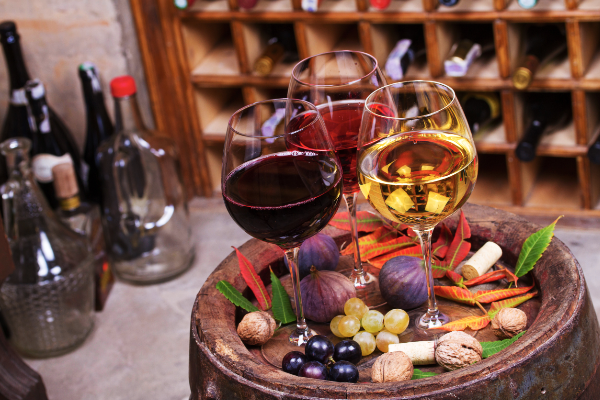
At the core of the pairing science is the basic understanding of taste and aroma. The human palate can detect five fundamental tastes: sweet, sour, bitter, salty, and umami (a savory richness). Nuts and wines can exhibit several of these tastes, either intrinsically or through processing (such as roasting or salting nuts). A perfect pairing balances these tastes between the wine and the nut, enhancing the best qualities of each.
Mouthfeel and Texture
When we talk about ‘mouthfeel,’ we are referring to the physical sensations produced by a substance in the mouth. This includes astringency, which is the dry, puckering sensation often associated with tannins found in wine, and fattiness or oiliness, which is typically present in nuts. The tannins in red wines can be softened by the fat content in nuts, reducing the astringency and allowing the fruit flavors of the wine to shine. Conversely, the crisp acidity in many white wines can cut through the richness of nuts, creating a refreshing contrast.
Tannins and Fats
Tannins are a group of bitter and astringent compounds found in grape skins, seeds, and stems. They contribute to the structure and longevity of wine and are more prevalent in red wines than whites or rosés. Nuts contain natural oils and fats that interact with tannins on a molecular level. The fats coat the palate and can soften the impact of tannins, making the wine feel smoother and rounder. For example, the robust tannins in a Cabernet Sauvignon find a match in the creamy richness of walnuts, which help to mellow the wine’s astringency while the wine’s boldness, in turn, provides a counterpoint to the nut’s earthiness.
Acidity and Saltiness
Acidity in wine acts similarly to acidity in food; it’s refreshing and can cleanse the palate. This property of wine pairs remarkably well with saltiness, as one can observe with the classic combination of salted almonds and a crisp, high-acidity wine like Champagne or Sauvignon Blanc. The salt from the nuts heightens the perception of the body in the wine while the acidity in the wine cuts through the richness, providing a palate-cleansing effect between bites.
Sugar and Roasting
Sweetness in wine interacts with nuts in various ways, depending on the preparation of the nuts. Roasted nuts, with their caramelized flavors, complement the sweet, ripe flavors in dessert wines, port, or sweet sherry. When nuts are candied or glazed with sugar, as is often the case with pecans or almonds, they can either contrast beautifully with the acidity and sparkle of a dry sparkling wine or enhance the sweet harmony of a Moscato or Riesling.
Aromatics and Flavor Compounds
Both wine and nuts carry distinct aromatic compounds which can be complementary or contrasting, leading to the discovery of new flavors or the amplification of existing ones. Hazelnuts, for example, have a naturally occurring compound called filbertone, which imparts a distinct roasted, woody aroma. This can match the oaky nuances of Chardonnay that’s been aged in wooden barrels, where similar compounds like vanillin have been imparted into the wine.
The Role of Yeast
The yeast used in fermenting wine, particularly in the méthode Champenoise used in the production of Champagne, contributes flavors like bread, biscuit, or toast due to compounds called yeast autolysis products. Nuts, especially those that are toasted, share these bready, toasty flavors, which is why Champagne and toasted nuts are such a revered combination.
The chemical dance between wine and nuts is intricate but understanding it can lead to exceptional tasting experiences. It’s about finding the balance where neither the wine overpowers the nut, nor the nut overshadows the wine. Experimentation, guided by these scientific principles, is often the key to discovering personal favorites and unexpected pairings that delight the senses.
With this scientific backdrop, we can now pivot towards the practical applications of our newfound knowledge. How do we translate these sensory principles into the real world when hosting a wine and nut pairing party? The trick lies in paying attention to details like presentation, quantity, and sequencing, which are crucial for a seamless and enjoyable tasting experience. As we prepare to set the stage for such an event, we’ll explore the nuances of these practical aspects, ensuring that each pairing is presented in a way that maximizes the pleasure of discovery for our guests.
Practical Tips for Hosting a Wine and Nut Pairing Party
As you transition from understanding the science of wine and nut pairings to putting this knowledge into practice, it becomes essential to consider the pragmatic side of hosting a wine and nut pairing party. It’s not just about the flavors; it’s about creating an ambiance and an experience that will delight your guests and engage their senses.

Preparation and Presentation
The first step in hosting your pairing party is the preparation of the nuts and wines. Ensure your nuts are fresh; staleness can significantly diminish the flavor and impact of the pairing. Consider offering a variety of preparations: raw, roasted, candied, or even spiced nuts can provide a broad spectrum of tasting experiences.
Presentation is key. Lay out your nuts and wines with intentionality. Use small dishes for nuts and provide separate wine glasses for each type of wine to avoid flavor carryover. Label each pairing station with the type of nut and wine, and include a brief description highlighting the expected flavor interplay. This not only educates your guests but also serves to enhance their anticipation of the tasting experience.
Order of Tasting
The order in which you serve the wine and nut pairings can greatly influence the tasting journey. Begin with lighter wines and subtle nut flavors, and progress towards the richer, more full-bodied wines and robust nuts. This typically means starting with white and sparkling wines and ending with red and dessert wines. By doing so, you allow the palate to adapt and appreciate the intricacies of each pairing without being overwhelmed from the start.
For example, initiate the tasting with a light, dry white wine like Sauvignon Blanc paired with pistachios, and gradually move towards a robust Cabernet Sauvignon complemented by the rich, buttery flavor of pecans. This sequence respects the palate’s natural progression from delicate to bold flavors.
Temperature and Glassware
Serve your wines at the correct temperature. White wines should generally be chilled, while red wines are best served slightly below room temperature. The right temperature will ensure that the wine’s bouquet and flavors are at their peak. Use appropriate glassware that enhances the type of wine being served; the shape of the glass can influence the tasting experience by directing the wine to the optimal part of the palate.
Ambiance
Finally, the atmosphere of your party can significantly impact the enjoyment of your pairings. Soft lighting, comfortable seating, and background music can all contribute to a relaxed environment that encourages leisurely tasting and conversation.
Creating the perfect wine and nut pairing party is about combining the art of hospitality with the science of taste. By paying attention to these practical tips, from preparation to presentation, and by considering the comfort and preferences of your guests, you are setting the stage for a sophisticated and enjoyable gastronomic event that will leave a lasting impression.
With this framework in place, let us consider the inevitable challenges that can arise when trying to achieve the ideal pairing. Availability of products, dietary restrictions, and even personal preferences can all present obstacles to creating the perfect match between nuts and wines. The next section will delve into how to navigate these challenges with ease, ensuring that every guest has a delightful and inclusive experience.
Addressing Common Pairing Challenges
Navigating the intricacies of wine and nut pairings can be an exhilarating journey, yet it can also present a unique set of challenges, some of which may not be immediately apparent when first planning your pairing party. From the availability of specific nuts and wines to accommodating guests with dietary restrictions, every host must be prepared to pivot and adapt to ensure the tasting experience is inclusive and enjoyable for all. Let’s discuss these challenges and how to gracefully overcome them.
Conclusion: Enjoying the Experience of Pairing Nuts with Wines
Embarking on the exploration of wine and nut pairings can be much like painting on a blank canvas; it’s an opportunity for expression through flavors, a chance to unlock sensory masterpieces where each brushstroke is a carefully selected nut or wine varietal. Whether you’re a seasoned connoisseur or a curious novice, the delightful interplay between the crunch of a nut and the swirl of wine in your glass offers an array of taste experiences waiting to be discovered.
Experimenting with these pairings can be both educational and immensely enjoyable. It encourages a deeper understanding of how different flavors and textures interact, transforming a simple snack and beverage into an exquisite gastronomic dialogue. A sip of a robust red paired with the creamy, rich taste of a macadamia nut can elevate the tasting experience to new heights, revealing the complex layers of both the wine and the nut.
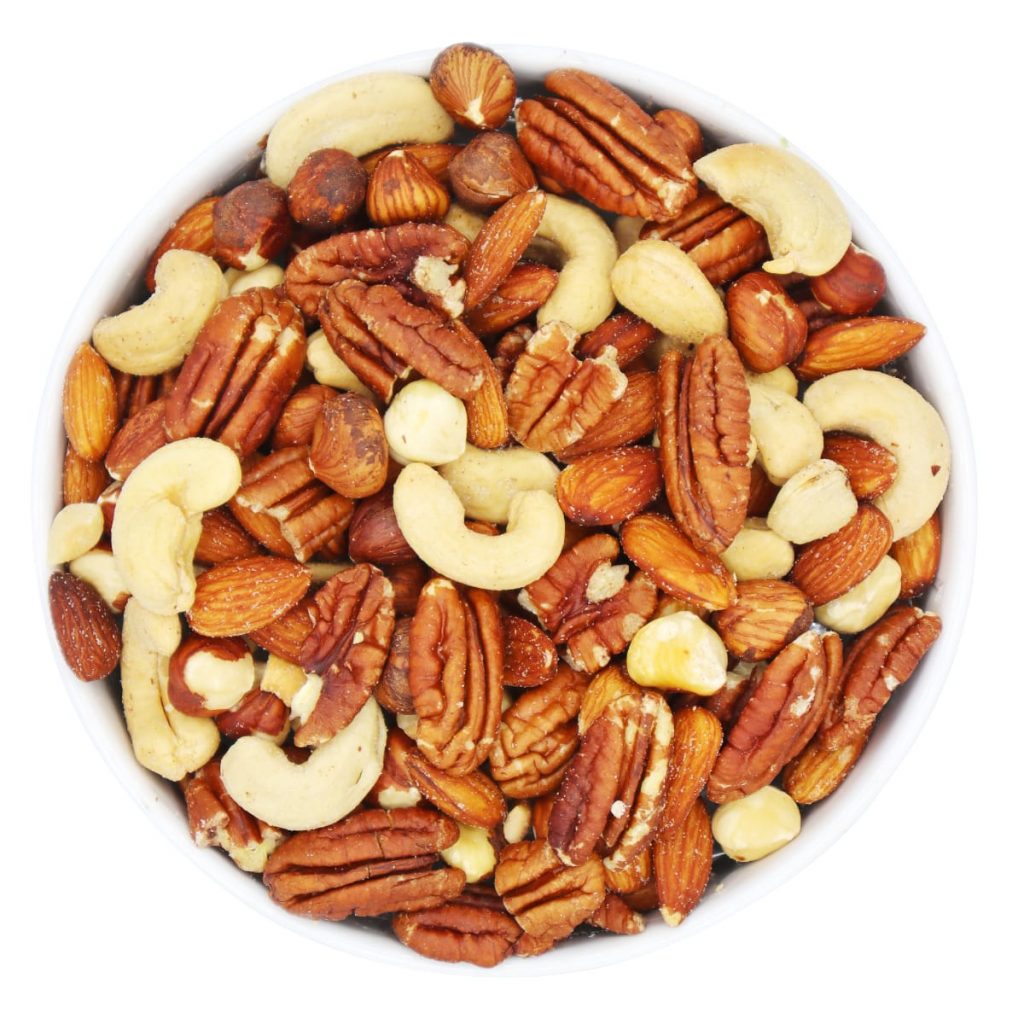
Sharing these experiences with friends and fellow wine enthusiasts only serves to enhance the joy of discovery. Imagine organizing a tasting event where each guest brings a bottle of wine and a type of nut, encouraging a communal foray into the vast array of potential combinations. This social aspect can lead to lively discussions, as every individual’s palate brings new perspectives on which pairings resonate best.
As you venture into your pairings, remember that there is no right or wrong choice. Each pairing is a personal journey through flavor and texture, one that reflects your preferences and willingness to step outside the familiar. So be bold, mix, and match, and don’t be afraid to pair a salty pistachio with a sweet dessert wine or a spicy almond with a crisp white. The discoveries you make today could become the fondly recalled classics of your future social gatherings.
The wines and nuts you select speak to your own unique style and the character of the occasions you choose to celebrate. A carefully chosen pairing can act as the perfect accompaniment to an intimate dinner, a casual get-together, or even a solitary moment of indulgence after a long day.
As your palate grows more discerning with each pairing, you may find yourself seeking out more obscure nuts or rare vintages, challenging your taste buds, and expanding your culinary horizons. You might delve into the histories of the wines, the stories of the vineyards, or the processes behind nut cultivation, each adding a layer of appreciation to the foods and beverages you’re enjoying.
So take that leap into the vast and varied world of wine and nut pairings. Let your curiosity guide you through this delightful gastronomic landscape. Remember that with each pairing, you’re not just savoring flavors; you’re creating memories and forging connections — both with the foods you eat and the people with whom you share them. Your palate is your passport, and there’s a world of combinations waiting to be discovered.
We hope that you reference this guide to pairing nuts with wines often. As a family-owned business, please share this guide with your friends and neighbors. Lastly, we invite you to browse our large selection of nuts, dried fruits, chocolates, and other goodies. We are confident that once you try our products, you will become a long-time customer as many other folks have, since we got our start in 1934.
Sam Henselijn Author’s Biography – Meet L’Orenta Nuts CEO
Copyright 2024 L’Orenta Nuts
L’Orenta Nuts proudly holds the SQF food safety certification, symbolizing our unwavering dedication to upholding the highest standards of food safety and quality. This certification guarantees that our products undergo rigorous scrutiny, ensuring transparency, traceability, and adherence to global food safety regulations for the utmost consumer confidence.
L’Orenta Nuts has the HACCP (Hazard Analysis and Critical Control Points) certification is a systematic approach to identifying, evaluating, and controlling food safety hazards. It ensures that food products are produced and handled in a manner that minimizes risks and complies with safety standards.
Our GMP (Good Manufacturing Practices) certification ensures that a manufacturing facility adheres to comprehensive quality and safety standards while producing pharmaceuticals, food, and other consumer goods, promoting consistency, quality, and compliance with regulatory requirements.
L’Orenta is an FDA-approved manufacturing facility and has met the rigorous standards set by the U.S. Food and Drug Administration. It demonstrates compliance with regulations, ensuring the production of safe and high-quality food products.



